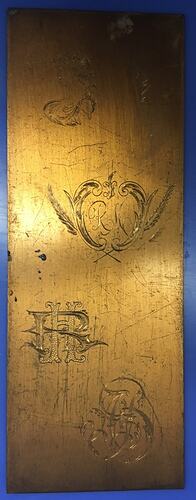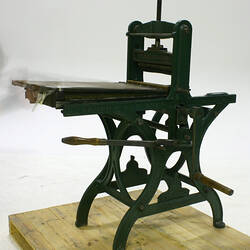Music engraving is one of the many ways to produce sheets of musical notation for printing. The term 'music engraving' used to refer just to plate engraving. Plate engraving became obsolete in about the 1980s.
In the early 21st Century, music engraving is the general term for drawing high quality musical notation. The term covers any high quality music notation including the use of a computer, plate engraving or manual methods. Other methods, with results of equal or lesser quality, include the use of printing type, typewriters, hand copying, rub-down transfers and stencils.
For the purposes of this narrative, music engraving refers only to plate engraving.
Plate engraving involves engraving music notation onto a metal plate, made of pewter or zinc. Zinc plates are easier to work on than pewter. The engraver works from right to left so that the plate has a mirror image of the notation engraved on it.
The engraver works from a manuscript with the music notation written on it. The manuscript might be made up of one or pages to be copied, that will be engraved onto plates. Once plates have been engraved and checked, the song, for example, would be printed out to produce what is known as the finished article.
Before engraving was started, the engraver counted the number of notes to each bar and checked each one off in pencil on the manuscript. He would do this for each page.
The pewter plate was then placed on the lithographic stone and engraved. The stone provided as close to a perfect flat surface as possible. The limestone provides a soft enough surface to absorb the impact of the punch. If the surface was too hard, the quality of the impression would be impaired.
The first things to be engraved on the plates were the stave lines. They were engraved using a stave cutting tool, which has five prongs to produce five horizontal lines. The five lines are said to be scored onto the plate, hence the term 'musical score'.
The different types of standard musical symbols are engraved using specialised tools; these include base and treble clefs. Non-standard symbols such as beams or slurs were engraved by hand.
The plate is then inked with either green or black ink to produce a negative in green or black and white. This negative is checked by the composer, who makes corrections on the manuscript. A typical correction might read '2nd stave line - reversed'.
It would take an engraver four to five hours to 'transfer' the notation onto a pewter plate; it was a very complex and painstaking task.
More Information
-
Keywords
-
Authors
-
Article types

